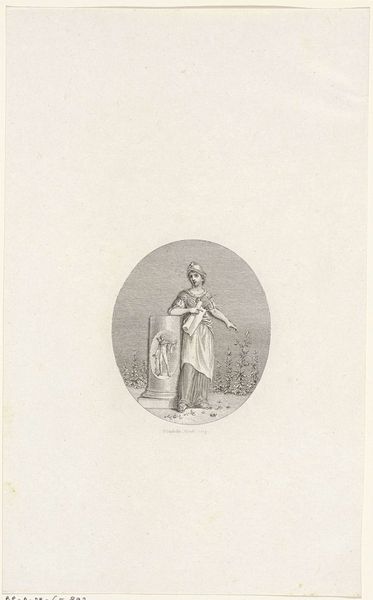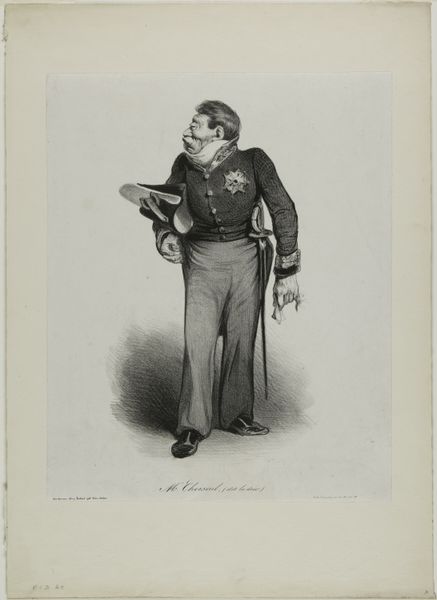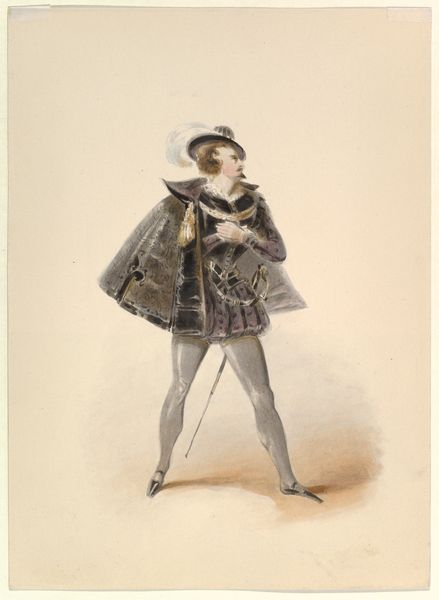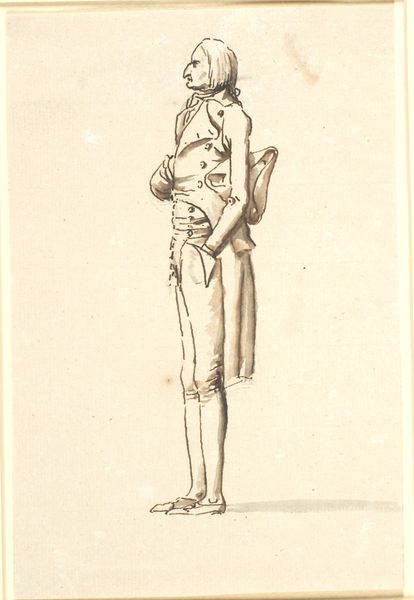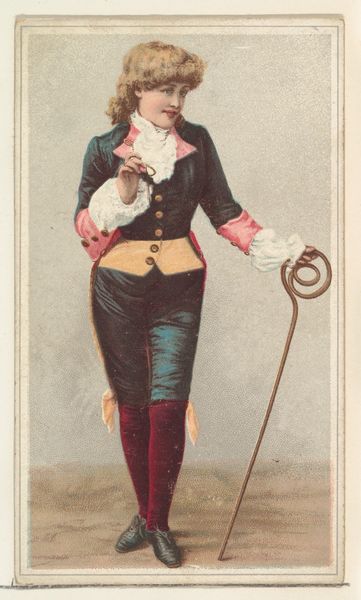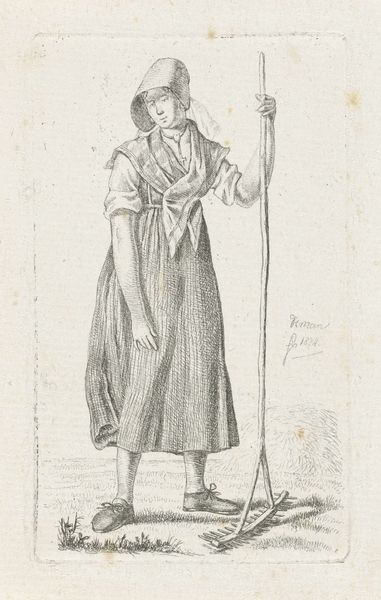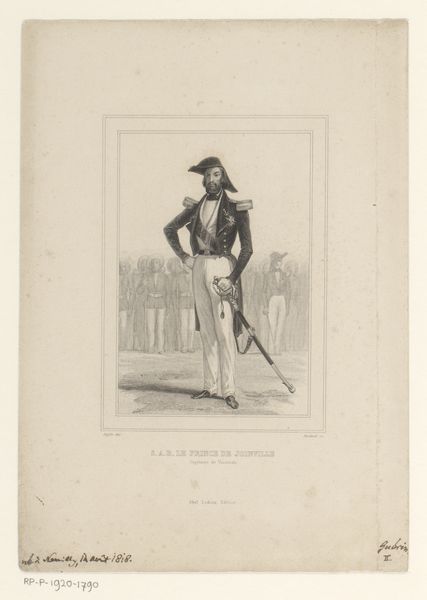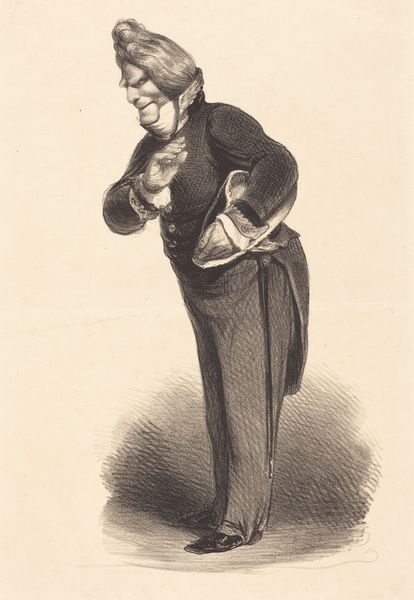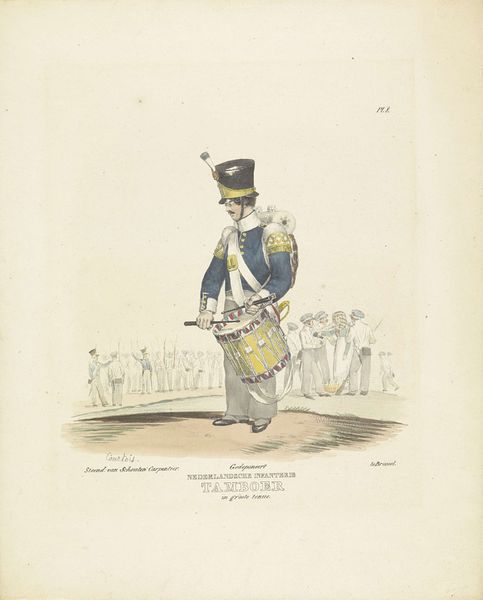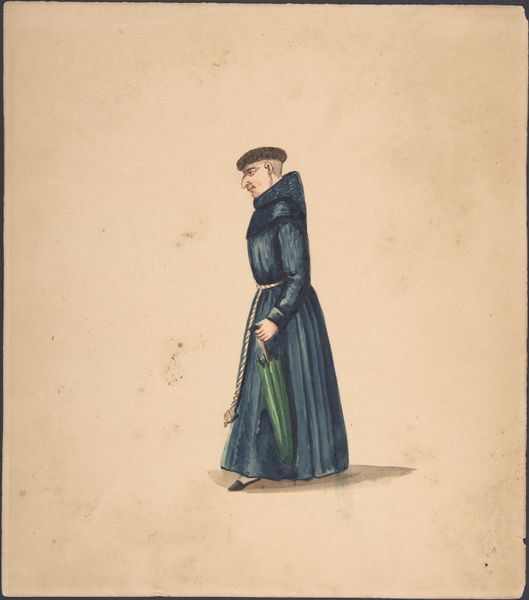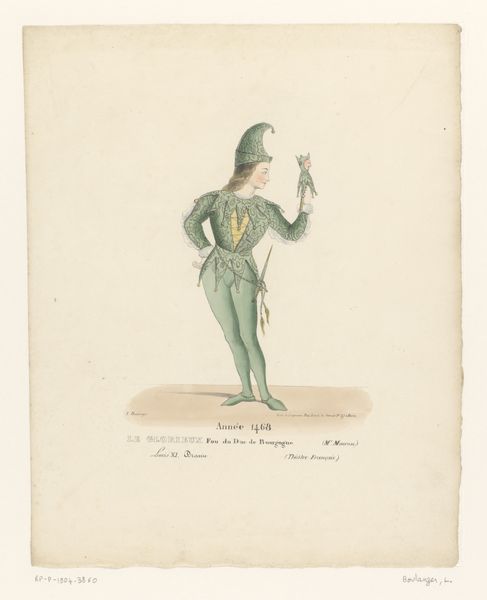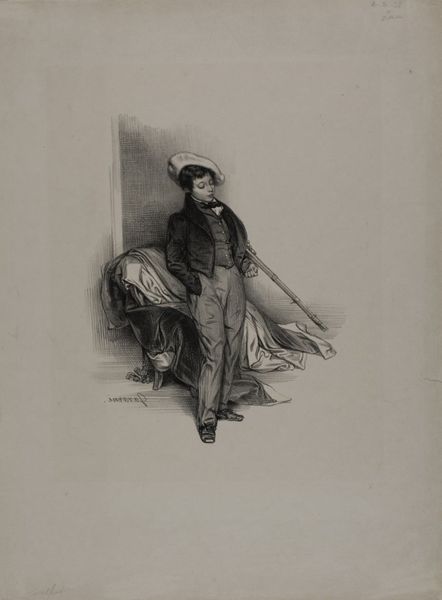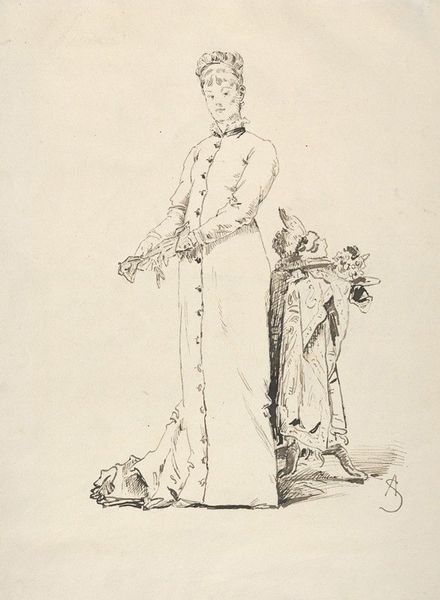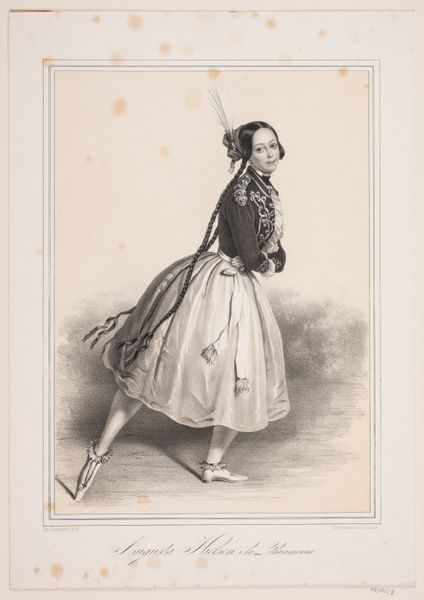
drawing, pencil
#
portrait
#
drawing
#
pencil sketch
#
figuration
#
romanticism
#
pencil
#
pencil work
Dimensions: height 280 mm, width 182 mm
Copyright: Rijks Museum: Open Domain
Editor: We’re looking at Elchanon Verveer’s “The Student” from 1840-1841, a pencil drawing at the Rijksmuseum. There’s a real sense of elegance to the figure, even a hint of dandyism. What can you tell me about this drawing from a historical perspective? Curator: What immediately strikes me is the representation of social class. This "student" isn’t just any student. Consider the cane, the tailored jacket. How does this image engage with the romanticized, and often highly exclusive, idea of intellectualism in 19th-century Europe? This is more about *performing* a particular role in society. What do you think makes him a student and not just any gentleman? Editor: Perhaps the hat gives him away? There’s a slightly bohemian air, yet everything else suggests privilege. What statement could Verveer be making by showing this combination? Curator: It suggests an interesting tension. Think about the evolving role of universities and intellectual life in the 1840s. Was Verveer perhaps commenting on the increasing accessibility of education for some, while highlighting the enduring class divisions that still shaped intellectual circles? Is the artist critiquing or celebrating it, or even subtly satirizing? How might this image play into existing visual tropes of students at the time? Editor: It’s fascinating to consider the possible layers of meaning embedded within what seems like a straightforward portrait. The cane suggests leisurely time too, I imagine. Curator: Precisely. That links the student with aristocracy more generally and less so the life of rigorous study! Now the art itself becomes a social and political document. Editor: I never considered a drawing of a man standing with a cane could say so much about social dynamics! It makes me think about how artists portray different kinds of students today, too. Curator: Exactly! By exploring its historical context, we understand how art contributes to the narratives of power, access, and social mobility.
Comments
No comments
Be the first to comment and join the conversation on the ultimate creative platform.
